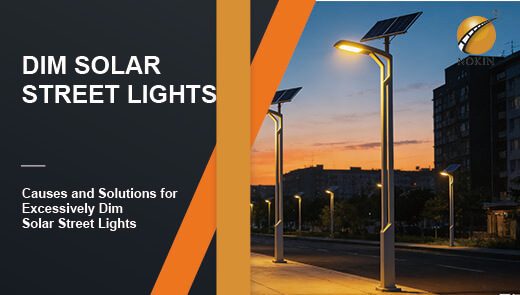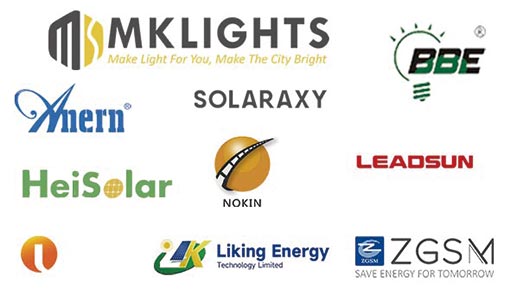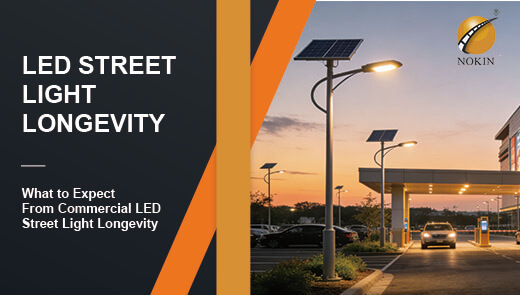The Benefits of Solar Street Lights for the Environment
With global environmental issues becoming more and more critical, finding sustainable energy solutions has become a priority. Urban lighting is an important area of energy consumption, and the reliance on fossil fuels for traditional street lighting has exacerbated carbon emissions and energy constraints. Solar led street lights, with their unique advantages, have brought a new direction to the solution of environmental problems. In this article, we will discuss the environmental benefits of solar street lights and their potential for future urban development.
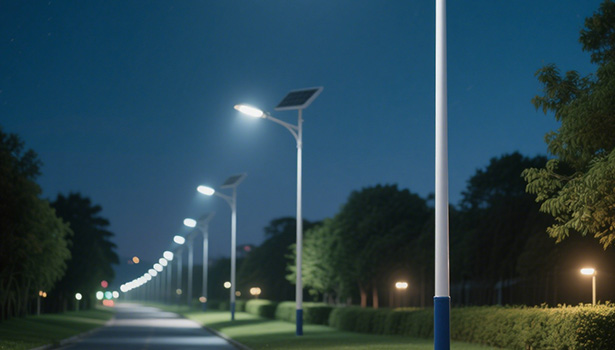
What are Solar Street Lights?
Definition of Solar Street Lights
A solar street light is a system that utilizes solar energy to provide lighting for outdoor roads. It consists of an LED light source, solar panels, batteries, solar charge controllers, poles, and other wires. The solar panels are usually made of polycrystalline or monocrystalline silicon, and the batteries are placed underground or in special battery boxes.
Working Principle
During the day, the solar panels, with the assistance of a solar charge controller, convert the collected solar energy into electricity and charge the batteries. At night, the battery releases the stored electricity to power the LED light source, realizing road lighting. The DC controller plays a key role in the whole process, which can effectively prevent the battery from being overcharged or over-discharged and ensure the stable operation of the system.
History of Solar Street Lights
The history of street lights is long and full of changes, each technological innovation has a profound impact on human night life and urban development. As early as in the 4th century BC, street lights have been born, ancient documents clearly recorded, the ancient Greek city of Anjouk took the lead in the use of early street lights, then fueled by olive oil, through a simple lamp burning luminous, although the range of illumination is limited, the brightness is weak, but this initiative to break the shackles of the night, for the night travel to provide the basis for protection.
Time passes, to the 16th century, candles and oil lamps become the main tool of public street lighting, in many European cities, the streets and alleys, every distance will be hanging these lamps, the person regularly add oil, replace the candles, to a certain extent, to enhance the effect of lighting at night. 1807, the German inventor Frederick Albert Windsor in London created the first widely used street lighting system, the system uses piped gas as a means of lighting, the system uses piped gas as a means of lighting. The system used piped gas as the energy source, and the burning of the gas emitted a bright light that made the city streets clearer at night, greatly improving the urban night environment. Since then, with the rapid progress of science and technology, arc lamps, incandescent bulbs and other electrical street lamps have appeared one after another, power-driven lighting methods to make the city night scene a new look.
As a new type of environmentally friendly lighting, solar street light is a product of the deep integration of modern technology and environmental protection concepts. In the context of the global energy crisis and the awakening of people's awareness of environmental protection, it has gradually emerged in the field of urban lighting by virtue of the efficient use of clean energy -- solar energy, injecting strong impetus for the green development of the city, and becoming an important force to promote sustainable development.
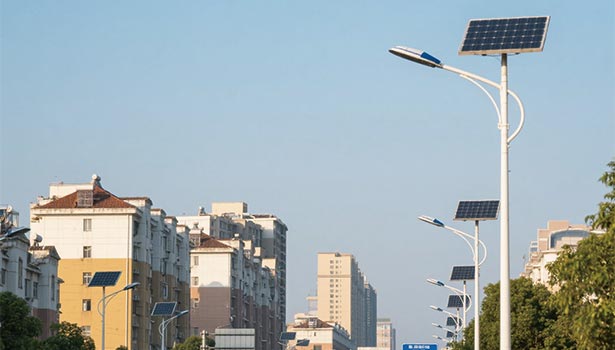
The Environmental Benefits of Solar Street lights
Reduced Carbon Emissions
|
Lighting Type |
Energy Source |
Carbon Emissions per kWh (kg) |
|
Traditional Grid Street light |
Fossil Fuels (e.g., Coal) |
~0.785 |
|
Solar street light |
Solar Energy |
Nearly 0 |
At a time when carbon emissions are a growing concern, the way energy is used in street lighting has a huge impact on the environment. Traditional grid-powered street lighting relies on fossil fuels such as coal and natural gas to generate electricity, with each unit of electricity producing about 0.785 kg of carbon emissions. Coal combustion process, not only the release of large amounts of carbon dioxide exacerbate the greenhouse effect, but also accompanied by sulfur dioxide, nitrogen oxides and other pollutants emitted, jeopardizing air quality.
On the contrary, solar led street light, relying on clean and renewable solar energy, the whole life cycle almost realize “zero carbon emission”. Taking the area of 1000 street lights as an example, assuming a single power of 100 watts, average daily lighting of 10 hours, the annual power consumption of traditional street lights reaches 365,000 degrees, corresponding to 286.5 tons of carbon emissions. If replaced by solar street lights, the annual reduction in carbon emissions is equivalent to adding a large “green barrier” to the earth, which is of far-reaching significance in mitigating the climate crisis and guarding the blue sky.
Energy Conservation
Solar led street light has an efficient energy utilization mechanism. It absorbs sunlight through solar panels and converts it into electricity for storage, forming a self-sufficient energy system without the need to obtain power from the grid. Currently, the photovoltaic conversion efficiency of mainstream solar panels on the market is between 15% and 25%. Although on the surface, this conversion efficiency is not particularly high, but considering that solar energy is a free and unlimited supply of energy, as long as the sun shines, solar panels can continue to generate electricity.
In contrast, conventional street lights continuously consume power from the grid, adding to the pressure on energy supply during peak times. A medium-sized city, for example, may have tens of thousands of street lights or more. In the summer peak power consumption, street light power consumption and residential air conditioning power, industrial power consumption, etc. superposition, often leading to grid overload, and even the case of pulling the switch to limit the power supply. The application of solar street lights can effectively reduce energy consumption, reduce the dependence on traditional power resources, and promote the sustainable use of energy. According to statistics, in some areas with sufficient light, solar street lights can save electricity equivalent to the electricity consumption of a small community every year.
Use of Renewable Energy Sources
Solar energy is a clean and abundant renewable energy source that is inexhaustible. It is estimated that each square meter of the Earth's surface receives between 1,300 and 2,300 kilowatt-hours of solar radiation per year. The solar energy received in the Sahara Desert region alone in a year is far more than the total energy consumption of the world in a year. Solar street lights convert solar energy into electricity for lighting, greatly reducing the dependence on non-renewable fossil fuels.
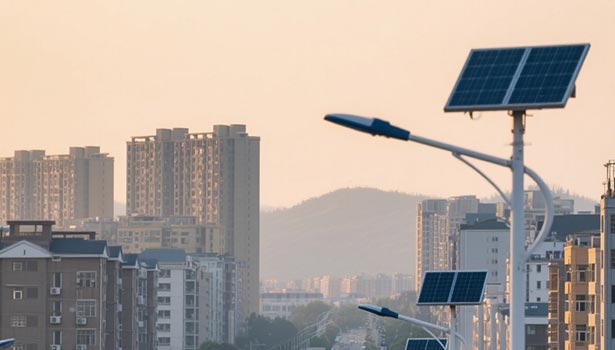
Fossil fuels, such as coal, oil and natural gas, not only have limited reserves, but also cause serious damage to the environment during extraction, transportation and use. For example, coal mining can lead to problems such as surface collapse and water pollution; oil and gas extraction and transportation can cause leaks and contaminate soil and water bodies . The use of solar energy, on the other hand, has little to no negative impact on the environment, helps optimize the energy structure, promotes the transformation of the energy system to a more sustainable direction, and lays the foundation for the long-term development of human society.
Long-Term Cost Savings
Although the initial investment of solar street lights is higher than that of traditional street lights, in the long run, it has significant cost advantages. Solar street lights do not have to pay expensive electricity bills, and due to their durability and low maintenance requirements, subsequent maintenance costs are also significantly reduced. Below is a cost comparison of the two:
|
Item |
Traditional street light |
Solar street light |
|
Initial Investment |
Lower |
Higher |
|
Annual Electricity Cost |
High |
Nearly Zero |
|
Annual Maintenance Cost |
Higher |
Lower |
|
5-Year Total Cost |
High |
Low |
Over time, the savings on energy bills and maintenance costs make solar street lights an economical and environmentally friendly choice.
The Future of Solar-Powered Street Lighting
Technological Innovation
Currently, solar technology is undergoing rapid development. In the future, more efficient solar panels will be available and their photovoltaic conversion efficiency will increase. At present, the highest photoelectric conversion efficiency of solar cells in the laboratory has exceeded 40%, although there is still a certain distance from large-scale commercialization, but with the continuous maturation of the technology, this achievement is expected to be gradually applied to the field of solar street lamps, so that the solar street lamps can be in the same light conditions to obtain more electricity, improve the lighting performance and reliability.
At the same time, the innovation of battery technology will also extend the service life of the battery, optimize the effect of energy storage. For example, the development of solid-state battery technology is expected to solve the safety hazards of traditional lithium batteries, and improve battery energy density and charge/discharge speed. New supercapacitors are also being studied, which have the advantages of fast charging and discharging, long cycle life, etc. They may be used in combination with storage batteries in the future to provide more stable energy storage support for solar street lights.
Smart Integration
The integration of Internet of Things (IoT) and smart sensors with solar street lights will open a new era of smart lighting. Through the real-time monitoring system, the staff can grasp the operation status of the street light at any time, and find and deal with faults in time. Intelligent sensors can automatically adjust the brightness of the light according to the ambient light, pedestrian flow and other factors, realizing adaptive lighting, which further improves energy efficiency and reduces operating costs.
Sustainable Design
In urban planning, the principle of sustainable design is getting more and more attention. As an environmentally friendly lighting facility, solar street lights will be more widely incorporated into urban planning programs. For example, solar street lights are prioritized for lighting in newly built ecological communities, parks and scenic spots. Some cities also combine solar street lights with architectural and landscape design to create a distinctive urban nightscape. For example, solar street lights are designed into artistic shapes, which not only meet the lighting needs, but also become a scenic spot in the city.
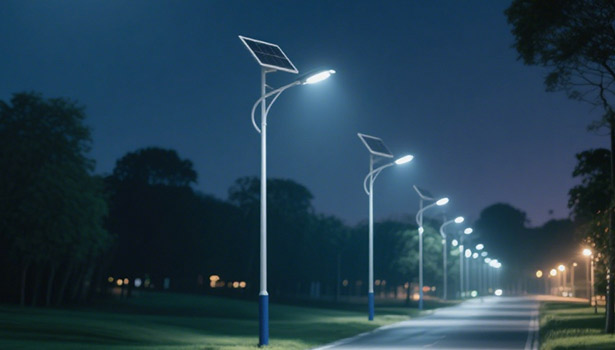
In addition, sustainable design is also reflected in the material selection and recycling of solar street lights. In the future, more environmentally friendly and recyclable materials will be used in the production of solar street lights to reduce the impact on the environment. At the same time, a perfect recycling system for solar street lights will be established, and used battery panels and batteries will be reasonably recycled and disposed of to avoid environmental pollution.
Community Engagement
With the increasing public awareness of sustainable development, community support for solar street light projects is also growing. Residents actively participate in urban development projects to promote the installation and popularization of solar street lights in communities and streets. Some communities have raised funds to install solar street lights through crowdfunding; others have organized volunteers to participate in the promotion and maintenance of solar street lights.
The government is also actively guiding communities to participate in solar street light projects and encouraging them to install solar street lights by providing subsidies and preferential policies. For example, some local governments subsidize a certain percentage of funds to communities that install solar street lights to reduce the installation costs of the communities . This bottom-up force will accelerate the popularization and application of solar street lights and promote the green transformation of cities.
With significant environmental benefits such as reducing carbon emissions, saving energy, utilizing renewable energy and long-term cost savings, solar street lights show great advantages in the field of urban lighting. With the promotion of technological innovation, intelligent integration, sustainable design and community participation, its future development prospects are very broad. Whether it is urban planners, enterprises or ordinary communities, they should actively consider the adoption of solar street lights, and jointly contribute to the protection of the environment and the promotion of sustainable development, so as to welcome a greener and better future.

